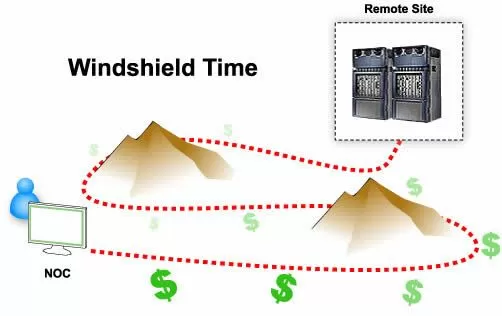Download our free Monitoring Fundamentals Tutorial.
An introduction to Monitoring Fundamentals strictly from the perspective of telecom network alarm management.
1-800-693-0351
Have a specific question? Ask our team of expert engineers and get a specific answer!
Sign up for the next DPS Factory Training!

Whether you're new to our equipment or you've used it for years, DPS factory training is the best way to get more from your monitoring.
Reserve Your Seat TodayIt's tough to achieve ROI on broadband in rural areas. There's simply too much territory to cover and too few customers.
The US federal government understands this challenge, but also recognizes that "broadband has gone from being a luxury to a necessity for full participation in our economy and society." In order to connect people across the country, the FCC provides funding to help rural carriers deliver broadband.
The "Connect America Fund" (CAF) is one FCC funding program for rural telcos. To date, over $1.5 billion has been distributed through the CAF program.
But, of course, there has to be some accountability for those carriers who accept funding. The standards depend on which program is providing funding.
Until recently under CAF-II (Connect America Fund Phase II) rules, each carrier had to serve at least a minimum quantity of subscribers with 4 Mbps download speeds (1 Mbps upload). The minimum downstream bandwidth has now been increased 2.5x to 10 Mbps.

If you don't have good monitoring in a rural location, you're going to waste A LOT of time and budget dollars driving out to your sites.
You might be an urban telco delivering service to high-density housing complexes. You might be a rural telco requiring federal support to serve 1 customer per square mile. No matter what, you benefit by reducing your costs.
Your profits are always a function of revenue minus expenses. Federal funding just gives you additional artificial revenue for acting in the public interest. You still need to generate as much subscriber revenue as possible and minimize your costs.
All telcos (and especially rural telcos) can reduce expenses significantly by focusing on one key area: remote equipment monitoring.
The challenge at rural telcos is easy to summarize: too few customers in too much space. You can't afford to be driving around from site to site unnecessarily. You're working with limited revenue (even with federal assistance), so you need to be efficient.
Remote monitoring lets you do that. You'll know what's happening at your remote sites, including:
A monitoring system that gives you confident situational awareness means you don't have to drive out at check on sites. If nothing is going wrong, there's no reason to waste time and fuel. When you do have to roll a truck, you'll never waste a trip by arriving without the right tool or replacement part. You'll know what you're facing before you leave the office.
These benefits are especially valuable if you work for a rural telco, because the driving distances are so tremendous. You need to use technology to "shrink" your service territory.
Review these case studies of rural telcos who have deployed remote monitoring to good effect:

Interbel manages their network in a very remote area.

OTT uses TempDefenders reporting to their SNMP manager to monitor temperature and power.

West River collects ASCII alarm data processed by a central master station.